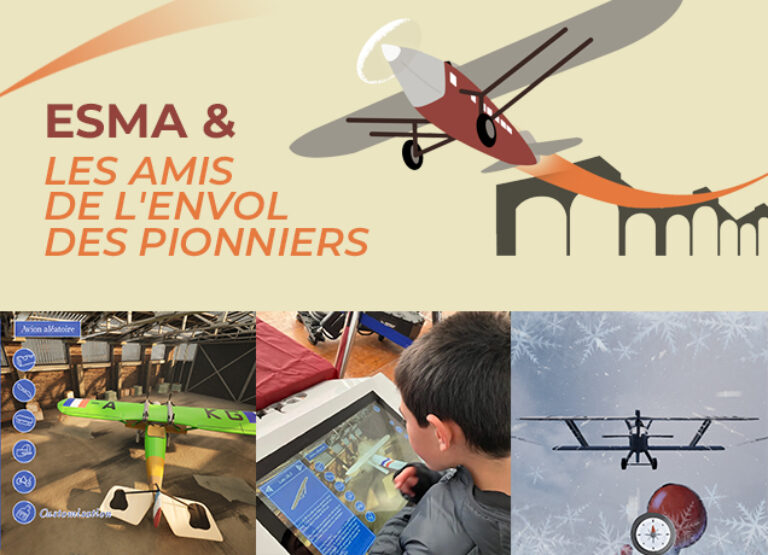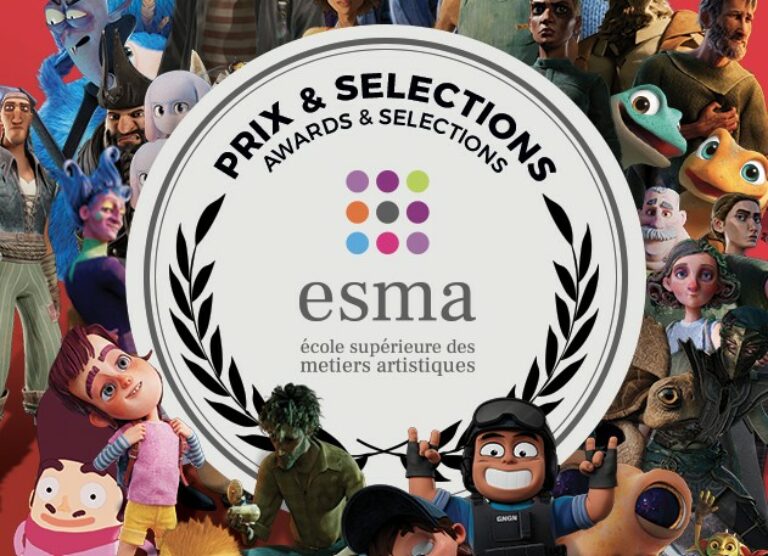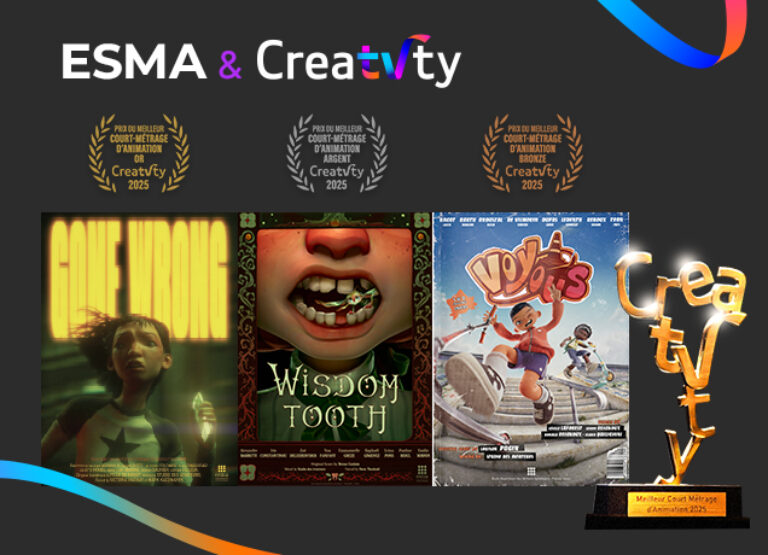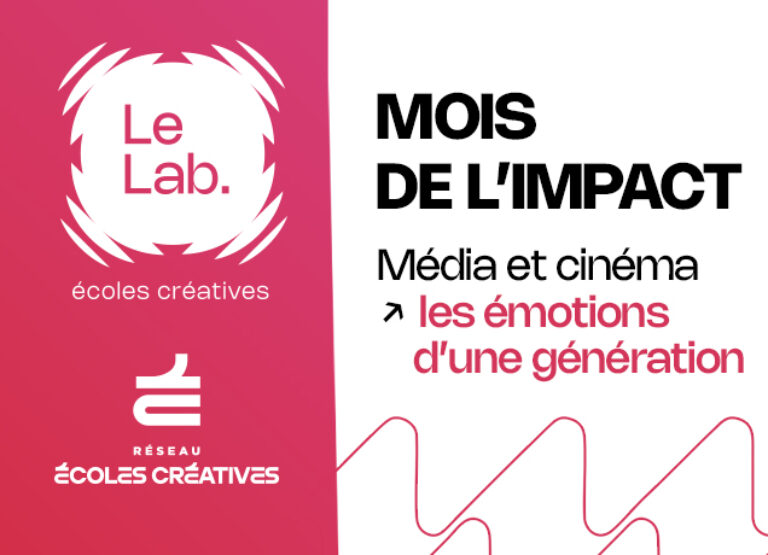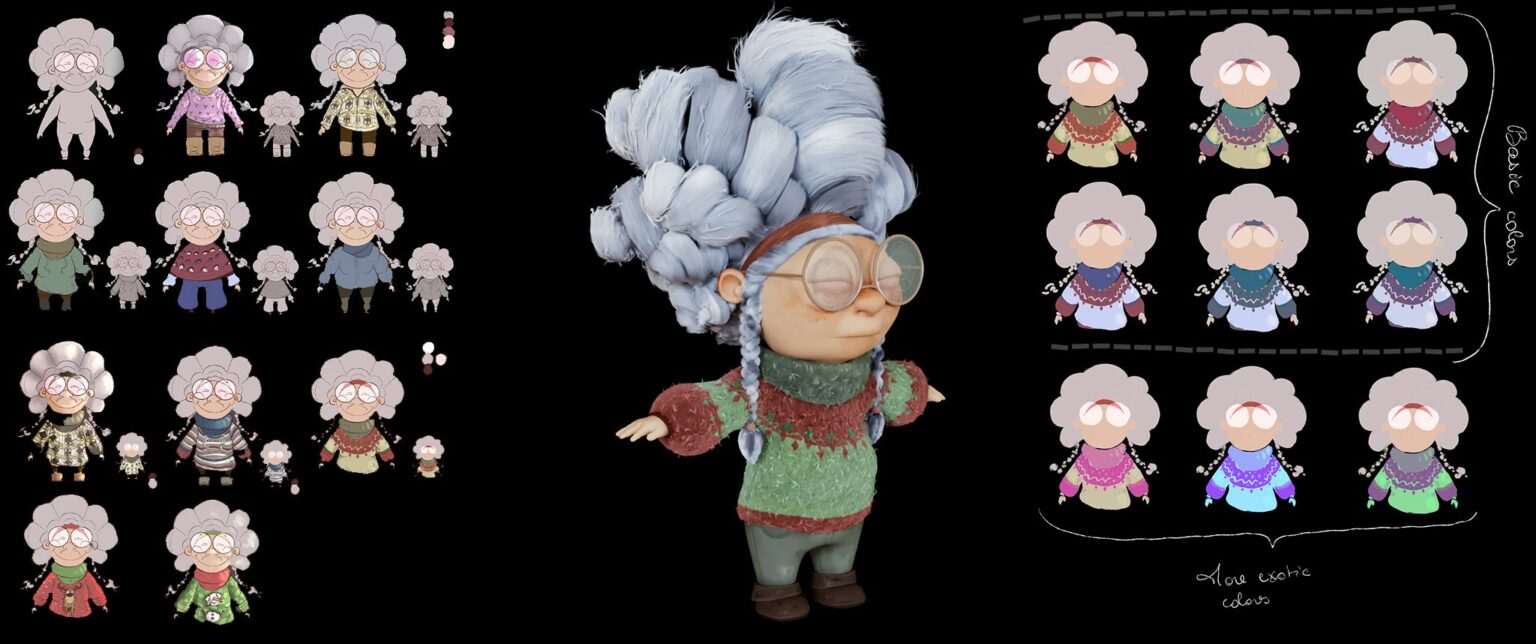
- Published 02.17.2025
- type Thematic news items
- Training 3D Animation & FX
Summarize with:
If you’re trying to choose between 2D and 3D animation, here’s what you need to know right away: 2D animation uses flat drawings or digital illustrations to create motion while 3D animation builds and animates models inside a 3D space with depth, lighting, and perspective. Both are in demand. But they require different tools, learning paths, and job opportunities. This guide shows you exactly how they compare — so you can pick what fits you best.
What are the differences between 2D and 3D animation?
2D and 3D animation courses pose specific challenges, related to the distinct techniques, tools and learning processes they require.
2D animation: preserving tradition in a digital environment
2D animation is based on the creation of successive drawings to give the illusion of movement. Traditionally done by hand, it has been modernised thanks to digital tools such as Toon Boom or Adobe Animate.
- Drawn frame by frame
- Flat images with no depth
- Seen in cartoons, indie games, and marketing videos
- Example software: Toon Boom, Adobe Animate
3D animation: navigating a complex technical environment
3D animation, on the other hand, is based on the manipulation of objects and characters in a three-dimensional space. It requires a combination of creativity and advanced technical skills.
-
Models built in 3D space
-
Can be viewed from any angle
-
Used in movies, AAA games, virtual reality
-
Example software: Maya, Blender, 3ds Max
Skills that make you stand out
If you’re going 2D Animation
-
Strong drawing skills
-
Knowledge of animation principles like squash and stretch
-
Ability to adapt to different visual styles
-
Experience with visual storytelling
If you’re going 3D Animation
-
Understanding of 3D environments
-
Comfort with rigging and rendering
-
Skills in camera angles, lighting, and movement
-
Ability to collaborate in teams with modelers and designers
Challenges in 2D and 3D Animation
Each animation style comes with its own learning curve. Here’s what makes each path challenging so you know exactly what you’re getting into.
Challenges in 2D Animation
-
Time-Intensive Process
Every frame must be drawn individually. This takes patience, discipline, and focus.
-
Artistic Consistency
Maintaining consistent proportions, angles, and expressions across hundreds of frames is tough, especially for beginners.
-
Drawing Skills Required
You need to master anatomy, movement, and expression through line work. Weak drawing slows everything down.
-
Adapting to Digital Tools
Modern 2D animators often use tools like Toon Boom or Adobe Animate, which add a technical layer on top of traditional skills.
-
Style Adaptability
Projects vary in tone and art direction. You need to match the style — whether it’s a gritty cartoon or a colorful explainer video.
Challenges in 3D Animation
-
Software Complexity
Programs like Maya or Blender are powerful — and hard to learn. Expect weeks just to feel comfortable.
-
Pipeline Pressure
You don’t just animate. You deal with modeling, rigging, lighting, rendering, and physics. One mistake can affect the whole scene.
-
Realism Expectations
3D often aims for lifelike motion. You’ll need to study real-world physics, camera behavior, and human movement.
-
Heavy Hardware Requirements
Rendering 3D scenes requires serious computing power. Lag, crashes, and long render times are common when starting out.
-
Team Collaboration
3D projects usually involve large teams. You’ll work closely with technical artists, modelers, and developers — communication matters.
What career opportunities are there after training in 2D or 3D animation?
Training in 2D and 3D animation opens doors to a variety of careers. However, each speciality offers different opportunities depending on its applications and market demand.
Opportunities for 2D animators
- Film and television industry: 2D animation remains popular in animated films such as those by Studio Ghibli or in television series such as Rick and Morty, The Simpsons, Gravity Falls, etc.
- Video games: Although 3D dominates the video game industry, some 2D games, especially independent games, continue to thrive (Hollow Knight, Cuphead, Ori and the Blind Forest). 2D animators are essential for these projects.
- Advertising and marketing: Many companies use 2D animated videos to promote their products or services, creating a constant demand for animators capable of producing short, impactful content.
- Educational and cultural applications: 2D animation is commonly used in museums, educational applications and explanatory short films.
Opportunities for 3D animators
- High-budget films and series: Production studios such as Pixar, DreamWorks, and Disney employ 3D animators for their blockbuster films. The demand for artists capable of creating immersive worlds is constantly growing.
- Visual effects (VFX): 3D skills are essential for visual effects in blockbusters such as the Marvel or Star Wars franchises.
- AAA video games: Major video game companies such as Ubisoft and Naughty Dog are looking for 3D animators to bring their characters and environments to life.
- Virtual and augmented reality industry: With the rise of immersive technologies, 3D animation skills are becoming crucial for developing captivating interactive experiences.
- Architecture and industrial design: 3D animators can also work in non-artistic fields, such as architectural visualisation or the creation of product prototypes, for both marketing and scientific purposes.
Which Animation Path Fits You Best 2D or 3D?
Not sure if 2D or 3D animation is right for you? Start by thinking about how you like to work, what tools you enjoy using, and where you want your career to go.
Choose 2D Animation
if:
-
You love sketching, character design, or visual storytelling
-
You want full creative control from start to finish
-
You enjoy working solo or in small, art-focused teams
-
You’re drawn to careers in TV, indie games, advertising, or educational content
2D is ideal if you’re more artistic, intuitive, and want to bring emotions to life through line, shape, and movement.
Choose 3D Animation
if:
-
You’re excited by software, problem-solving, and technical detail
-
You enjoy building scenes that feel real and immersive
-
You want to work in film studios, AAA game development, or virtual experiences
-
You’re open to collaboration across modeling, lighting, and rigging teams
3D is the better fit if you’re technical, detail-oriented, and interested in larger-scale, high-budget productions.
If you’re serious about turning animation into a career, ESMA offers professional training in both 2D and 3D animation 3D Animation & VFX program . Each path teaches different tools and skills, based on your goals and interests. 2D focuses on artistic storytelling, while 3D is driven by technology used in film, games, and virtual experiences.
FAQ
Which is better for beginners 2D or 3D animation?
If you already draw, start with 2D. If you prefer tech, try Blender and start with 3D. Both are beginner-friendly with the right tools.
What are the salary differences between 2d and 3d Animators?
-
2D animators earn around $67,800/year
-
3D animators average $84,000/year, with potential to grow into specialized roles
Can I get hired with just one skill?
Yes. Studios often hire 2D or 3D specialists — but being cross-trained increases your value.

